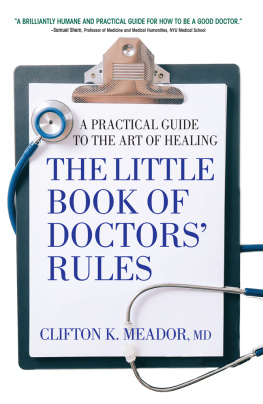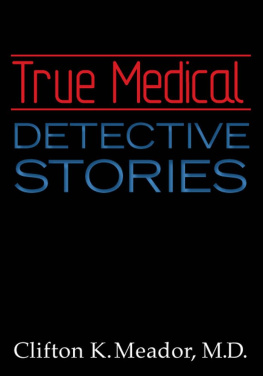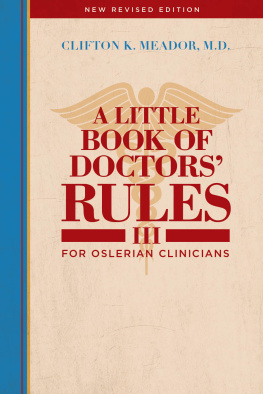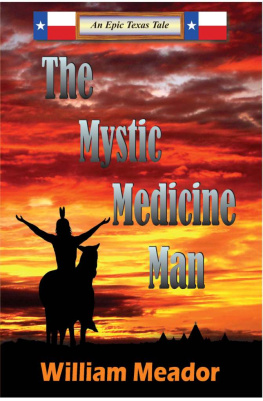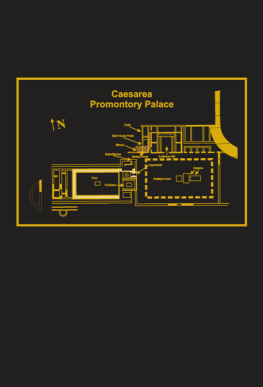Clifton K. Meador M.D. - A Little Book of Doctors Rules III. . . For Oslerian Clinicians.: New Revised Edition
Here you can read online Clifton K. Meador M.D. - A Little Book of Doctors Rules III. . . For Oslerian Clinicians.: New Revised Edition full text of the book (entire story) in english for free. Download pdf and epub, get meaning, cover and reviews about this ebook. genre: Romance novel. Description of the work, (preface) as well as reviews are available. Best literature library LitArk.com created for fans of good reading and offers a wide selection of genres:
Romance novel
Science fiction
Adventure
Detective
Science
History
Home and family
Prose
Art
Politics
Computer
Non-fiction
Religion
Business
Children
Humor
Choose a favorite category and find really read worthwhile books. Enjoy immersion in the world of imagination, feel the emotions of the characters or learn something new for yourself, make an fascinating discovery.
- Book:A Little Book of Doctors Rules III. . . For Oslerian Clinicians.: New Revised Edition
- Author:
- Genre:
- Rating:4 / 5
- Favourites:Add to favourites
- Your mark:
- 80
- 1
- 2
- 3
- 4
- 5
A Little Book of Doctors Rules III. . . For Oslerian Clinicians.: New Revised Edition: summary, description and annotation
We offer to read an annotation, description, summary or preface (depends on what the author of the book "A Little Book of Doctors Rules III. . . For Oslerian Clinicians.: New Revised Edition" wrote himself). If you haven't found the necessary information about the book — write in the comments, we will try to find it.
A Little Book of Doctors Rules III. . . For Oslerian Clinicians.: New Revised Edition — read online for free the complete book (whole text) full work
Below is the text of the book, divided by pages. System saving the place of the last page read, allows you to conveniently read the book "A Little Book of Doctors Rules III. . . For Oslerian Clinicians.: New Revised Edition" online for free, without having to search again every time where you left off. Put a bookmark, and you can go to the page where you finished reading at any time.
Font size:
Interval:
Bookmark:
 ISBN 9781720155553 Copyright 2018 Clifton K. Meador, M.D. A LITTLE BOOK OF DOCTORS RULES III for Oslerian Clinicians New Revised Edition TABLE OF CONTENTS Preface to the New Revised Edition..................... 6 Preface to First Edition: 1992 - Excerpts .............. 10 List of Categories of Rules
ISBN 9781720155553 Copyright 2018 Clifton K. Meador, M.D. A LITTLE BOOK OF DOCTORS RULES III for Oslerian Clinicians New Revised Edition TABLE OF CONTENTS Preface to the New Revised Edition..................... 6 Preface to First Edition: 1992 - Excerpts .............. 10 List of Categories of Rules
- Rules for listening, talking, and establishing
- Rules for correct use and understanding
- Rules for correct use of medications..........35-42
- Rules for caring for difficult patients........ 44-49
- General rules for being a physician and
Meador, MD................85 About the Author...................................87 On reading Clifton K. Meadors A Little Book of Doctors Rules III All cultures have their sages. The job of the sage is to codify and pass on nuggets of wisdom gained through experience, observation, and reflection. Dr. Meador is our sage and this little book of rules for clinical practice is just so: a collection of proverbs carefully rendered and trustworthy, offered as guidance for the clinical encounter that we may avoid folly, proceed expeditiously, render comfort, and see our patients safely through. My advice: read the entire volume over a week-end, then begin again, reading a few at a time over coffee before work, or at the end of the day to great profit for yourself and your patients! John Leonard, MD Professor of Medicine Emeritus, Department of Medicine, Vanderbilt University Former Residency Program Director, Internal Medicine Another reading of Clifton K.
Meadors A Little Book of Doctors Rules III This book is so valuable because Meador reminds doctors that they are treating a person, not a disease. With that in mind, he stresses the importance of listening to the patient, observing him, and even touching him. First, listen for clues: "Most patients can tell you why they got sick... Let a patient ramble for least 5 minutes when you first see them. You will learn a lot." Then, be sure you are facing the patient. "Learn to watch people's faces and eyes.
Learn to watch their lower lip and then the upper lip." Finally, "Always examine the part that hurts. Put your hand on the area." Then, based on what he has heard, seen and felt, the doctor is in a position to begin ordering tests-- but not a battery of tests: "Use laboratory tests like a rifle, not a shotgun." Over-testing can lead to over-treating. Maggie Mahar, author of Money-Driven Medicine: The Real Reason HealthCare Costs So Much. A LITTLE BOOK OF DOCTORS RULES III for Oslerian Clinicians Preface to the New Revised Edition It has been 26 years since the first edition of A Little Book of Doctors Rules was published in 1992. The book is now out of print. Colleagues have urged me to publish a revised edition.
There have been many major changes in the science and practice of medicine. In making these revisions I have tried to preserve those rules that are at the core of medicine as a healing profession. I have adopted Sir William Osler as our guide, naming this edition after him, focusing on his admonition to treat the patient with the disease - rather than treating only the disease. As you will see, most of these rules remain directed at medical students, residents and physicians in primary care - general internists, family physicians, and pediatricians. In primary, first contact medical care many patients do not have a definable medical disease. Some say nearly half.
Yet, they almost all have physical symptoms. Even though there is not a medical disease behind every symptom there IS a definable cause if one listens and observes the patient carefully, engaging the patient in the search. It takes undivided time and attention to identify the hidden cause of the symptoms, sometimes over a period of several visits. These causes for hidden symptoms vary greatly: stressful relationships at home or work; exposure to toxic substances (inhaled, ingested or in skin contact); or self-inflicted illnesses and injuries (factitial diseases). These causes, whatever they may be, are often buried in the unconscious mind, out of awareness of the patient. The largest group of patients with symptoms but no disease, are those patients who have adopted illness as a way of life, whether labeled hysteria or somatizing disorder or even psychosis.
All patients require establishing trust and rapport which demand the physicians full attention and ability to listen. Anything that distracts attention or reduces direct contact time with the patient will prevent discovery of these hidden causes. In reviewing the changes in medicine since 1992, I am struck with how many of the changes move in a negative direction of separating the physician from the patient. The appearance of the Electronic Medical Record (EMR) leads the list, mandating total time and attention to typing into the record. In my own visits to my personal physicians, I am taken with how little direct attention I am receiving. Face to face contact seems to be disappearing.
In my waiting room times, the most frequent complaint I hear from other waiting patients is My physician just doesnt listen to me anymore. Sadly, I have no solution to the EMR problems. The reorganization of medicine from single or small group practices into a corporate or hospital owned models has also brought changes that reduce contact time for listening and establishing trust and rapport. The demands on the employed physicians for high volume of visits, even daily quotas, virtually eliminate time to explore deeper causes for symptoms. And then there are the tsunamis of new diagnostic technologies CT Scans, MRIs, arteriograms, echocardiograms, ultrasound visualizations, EKGs, EEGs and on and on. All of these are visualizations, pictures of organs and vessels.
If these visualizations fail to reveal an abnormality then the patient is often considered well or free of disease. Are these very powerful and useful diagnostic tools leading us to say, If we cannot see it then there is no disease or cause? There ARE diseases and causes that are auditory and must be heard to be found. Again these visual tools can lead us away from listening and observing the patient. There is an even more insidious effect from premature reliance on these visualized tests. In many cases these visualizations are ordered as screening tests on the general population. Whenever a test is ordered on a population with a low prevalence of disease, then the majority of positive tests will be false positives.
Low prevalence of disease is the most determining factor for generating false positives. Once the positive test results are reported, the physician must then do further tests to define the disease, driving up costs (and profits); or worse, he unwittingly accepts the false positive as real and assigns a nonexistent diagnosis to the patient. Both create unneeded demands and expenses for medical visits. Once a diagnosis is given it is almost impossible to get rid of it, even if incorrect. (1, 2). The corporate model, as a money driven enterprise, encourages such excessive use of expensive tests.
All of these factors EMR entry distractions; the move to corporate practices with employed physicians and volume demands; or the false positive problem from lack of attention to prevalence of diseaseall move physicians away from a healing profession to medicine as a commodity. There is one more distracting feature from the changes in practice over the past 26 years. The profession is now further and further divided and separated into more and more subspecialties. Each specialty now sees its own patients, independent of any generalist. Patients move from one specialist to another with no one to take on the whole patient. Leaving no one, in Oslers words, to treat the patient with the disease not just the disease.
Next pageFont size:
Interval:
Bookmark:
Similar books «A Little Book of Doctors Rules III. . . For Oslerian Clinicians.: New Revised Edition»
Look at similar books to A Little Book of Doctors Rules III. . . For Oslerian Clinicians.: New Revised Edition. We have selected literature similar in name and meaning in the hope of providing readers with more options to find new, interesting, not yet read works.
Discussion, reviews of the book A Little Book of Doctors Rules III. . . For Oslerian Clinicians.: New Revised Edition and just readers' own opinions. Leave your comments, write what you think about the work, its meaning or the main characters. Specify what exactly you liked and what you didn't like, and why you think so.



